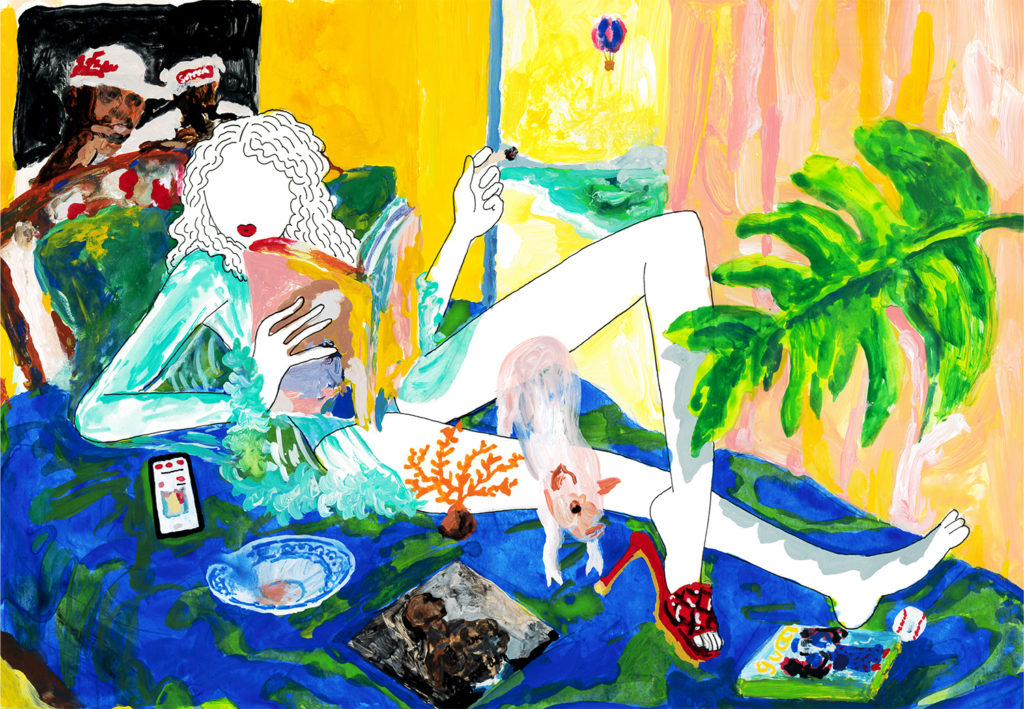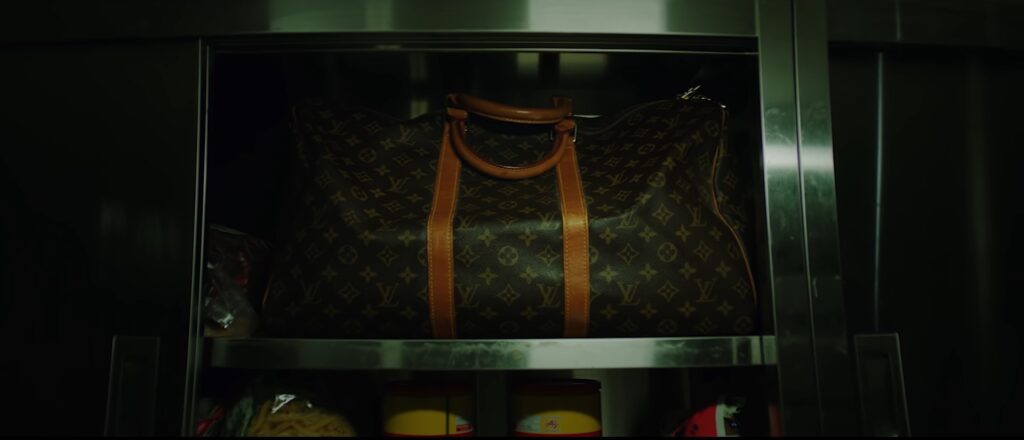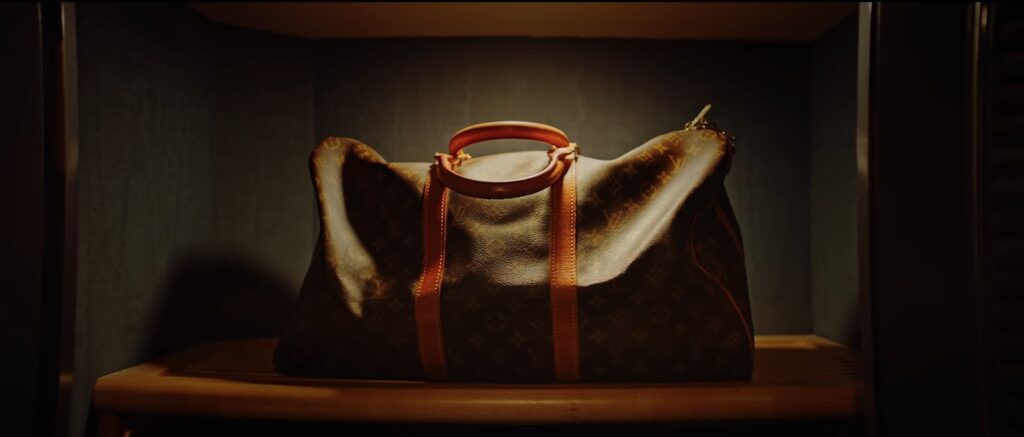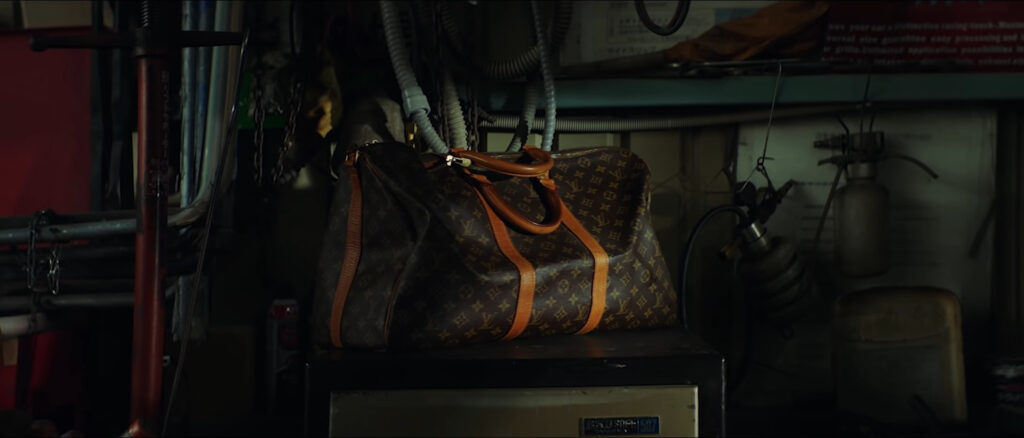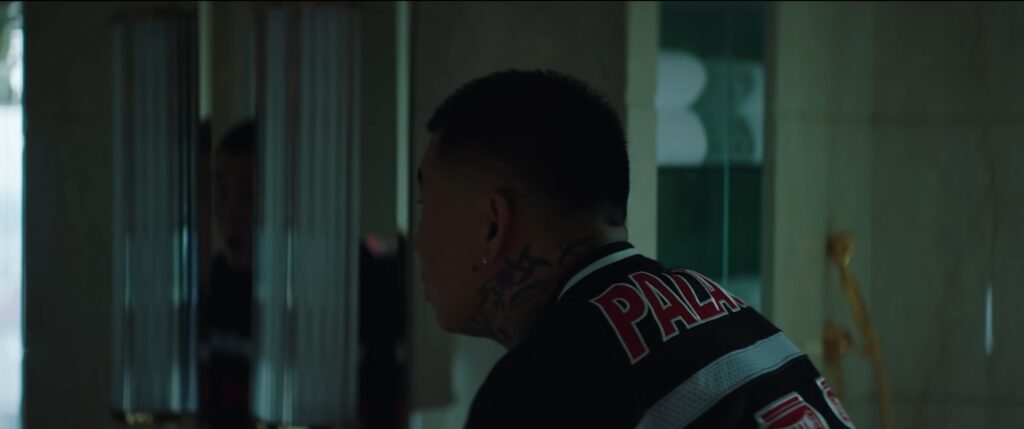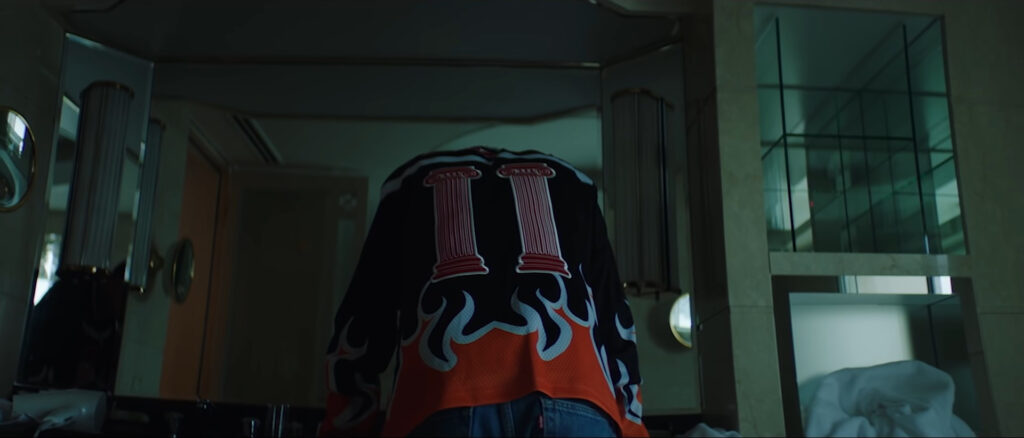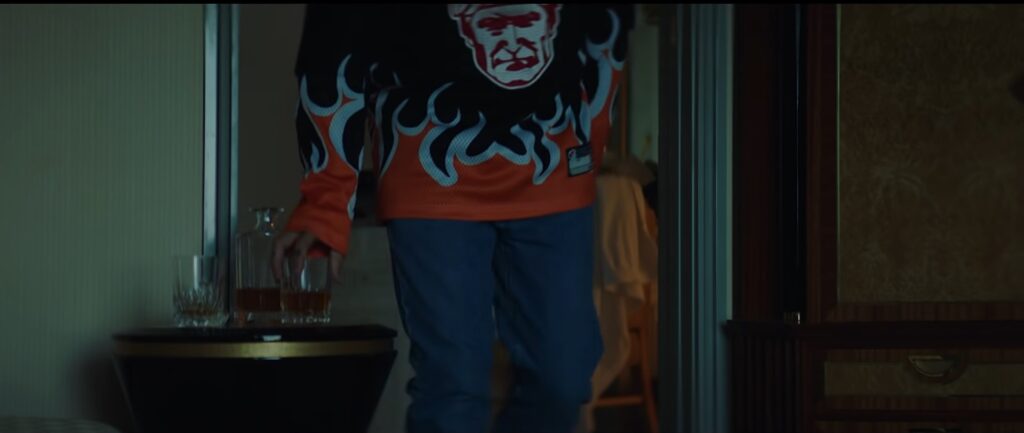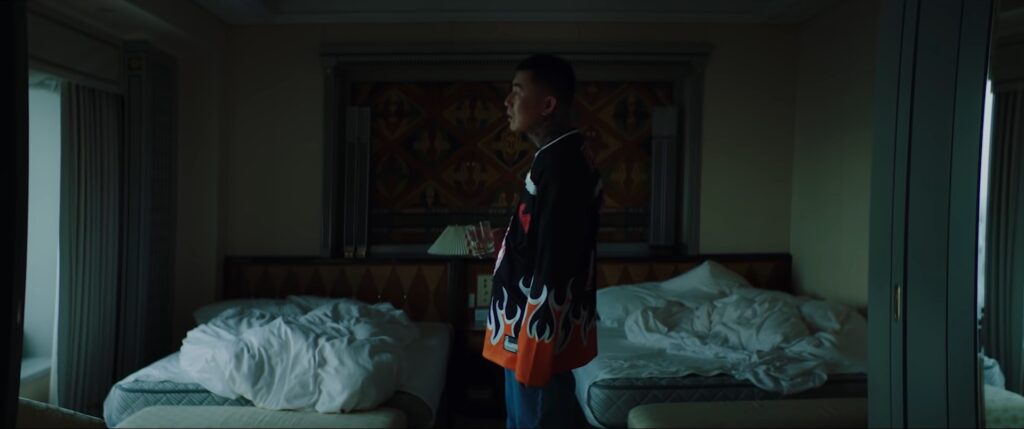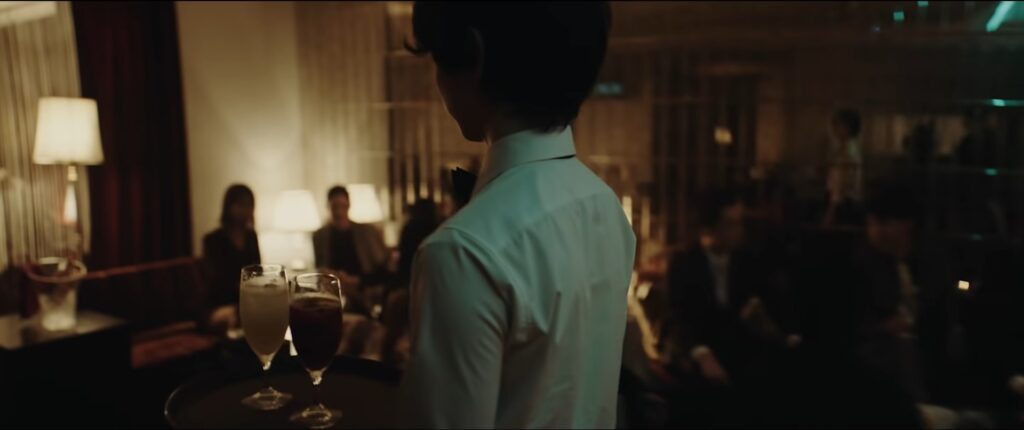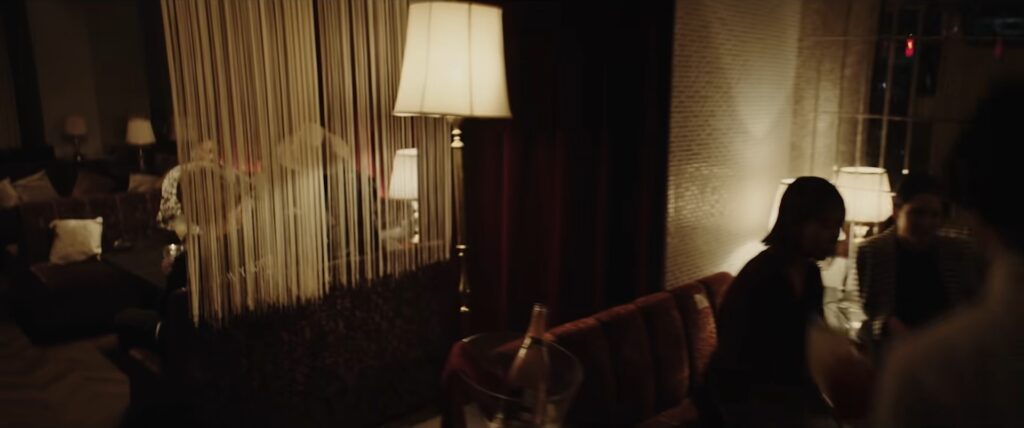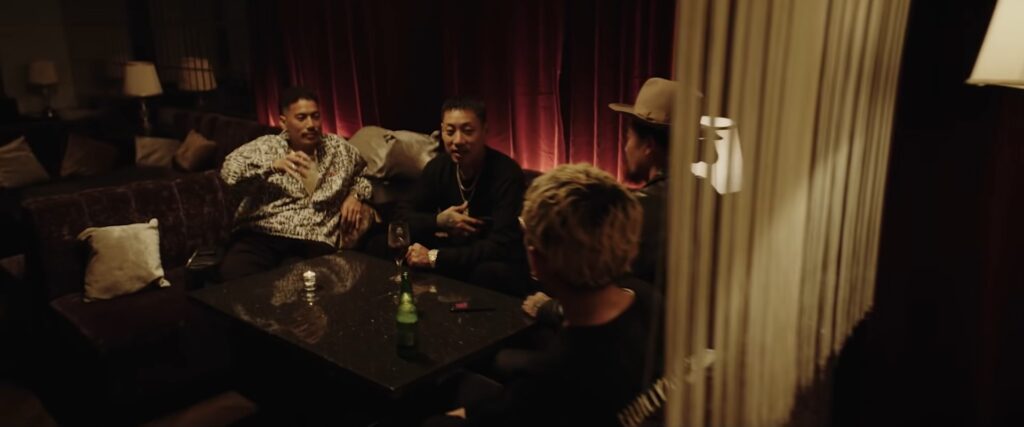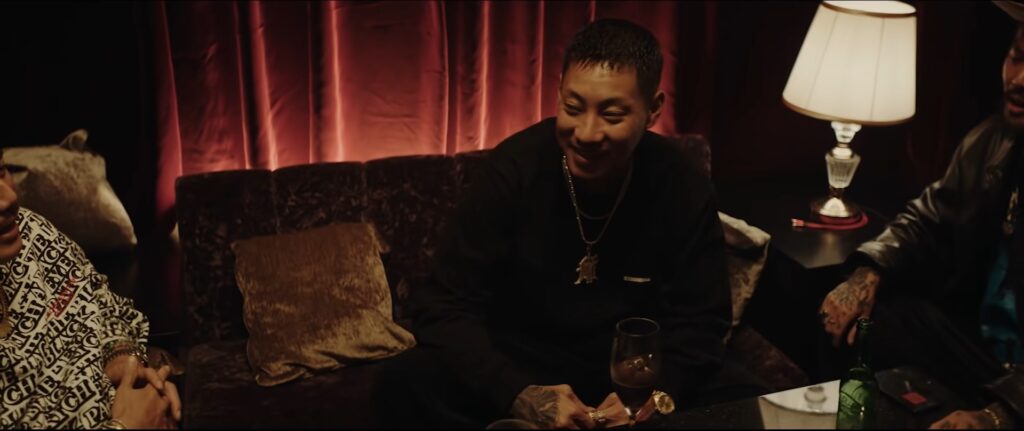When we look at the relationship between music and fashion, as well as between fashion trends and youth culture, we get a clearer understanding of the times we live in. In this series, Tsuya-chan, an up-and-coming writer, analyzes current cultural events by examining contemporary music with a focus on Japanese hip-hop.
In the eleventh installment, Tsuya-chan carefully analyzes Anarchy & Badsaikush’s “Angela ft. Namedaruma” music video, in which a Louis Vuitton bag appears. Through the scenes and motifs depicted in the video, she reveals the true nature of the brand.
A movie-like music video that depicts emotional turmoil
In the last installment, I revealed how Louis Vuitton and musicians have influenced one another, particularly by looking at how the brand’s name has popped up in Japanese rap lyrics. This time, I would like to introduce an example that depicts Louis Vuitton’s image/value in a more visual manner and constructs a multi-layered message. In recent years, music videos have become increasingly important as an embodiment of creativity for musicians, making them impossible to ignore as a medium that reinforces the value of musical works. Among these music videos, I’d like to refer to one that maintains a sense of self-restraint through dark shadows that fill the screen. Between the wavering, irresistible emotions revealed by the camera, the unstable emotions that drift like smoke, and the fire depicted in the final scene—people have said that this music video is like a full movie.
The video is directed by filmmaker Takuto Shimpo, who recently won the Best Video Director award at the Space Shower Music Awards 2021. His credits have graced the endings of various rap music videos before, but because this video is particularly clean-cut, I’m moved even by the silhouette of “Takuto Shimpo” over the climactic flames in the end credits. Avid listeners of rap may have already realized this from my description thus far, but the music video I’m referring to is “Angela feat. Namedaruma” by Anarchy & Badsaikush. This music video, which boasts a high degree of perfection among music videos released in Japan in recent years, came out in November 2020.
What it means for Louis Vuitton to be thrown into the fire
I won’t get into the extent to which this music video, which has been described as movie-like, meets the requirements of a movie. But while standard music video practice usually involves short cuts, edited in a rushed—and in some ways distracting—manner, this one, with only 45 cuts over a not particularly short run-time of 4 minutes and 18 seconds, is certainly stitched together with a relaxed attitude that could indeed be called movie-like. The first four cuts of the video show 4 Louis Vuitton Boston bags placed in different locations, in the order of kitchen→hotel→car trunk→workshop, with each bag weaving its own story throughout the video.
In the fifth cut, a car arrives at the workshop. As the camera on the car continues to move, it approaches the workshop, and the door opens to reveal Delta9kid, who appears to have timed this with the arrival of the car. He seems to be meeting someone with a certain purpose in mind, and after blowing a puff of smoke, he stands up as if he has made up his mind. He quickly heads to the car where G-Plants is waiting, puts his bag in the back seat, and gets in the car. This is all depicted from cuts 6 to 14, during which the camera persistently follows Delta9kid from the side, behind, front, zoomed out, and close-up.
Now that the camera is moving, I’d like you to stay with me on this “journey” for just a bit longer. As we follow the direction the car is headed in with the two safely on board, we encounter noteworthy camerawork once again in the 15th to 18th cuts. The camera continues to dutifully shoot its subjects from every direction, capturing the moving car from the front and back, and then zooming in on each of the two men. I wonder if we are following them, and the tension builds as the camera continues to close in on them from all directions, as if they are being stripped bare.
As the song progresses to Anarchy’s verse, the camera remains focused. From the 19th to 25th cuts, up until he puts on his denim jacket, the video shows him passing time in his hotel room as if in hiding, comprehensively capturing him from the side, back, and front. The 26th cut dramatically shows the three men walking. The subsequent scene where they are relocating by car is similar. Like 360° photos of suspects in custody, they are captured from every direction: the front, back, and side.
The shot in the film that demonstrates the most effort is shot 31, and I think viewers will be entranced by the scene’s power. A moving shot in a dimly lit restaurant makes it look as if we are following the waiter, and then subverts our expectations when it instead shows Badsaikush in a seat towards the back. In this scene, the flexible camerawork, which pretends to follow an expected trajectory but does not, highlights the closed nature of Badsaikush’s table. Once again, the subsequent camerawork approaches him from all angles before closing in on his body, as if to chase him out and into the kitchen.
In the scenes where characters are introduced, as well as in the kitchen scene, the rotating camera creates a sense of depth and three-dimensionality. From that three-dimensional space that represents the terrarium we call society, each man leaves his hideout to head to a single location. The camera continues to follow the four from all directions, as if to expose their existence entirely. The four of them carry Louis Vuitton bags and walk towards the fire. Just like the lyrics, “I’m serious, so I’m willing to bet my life / I’ll be sure to bear fruit/ Water the flowers / Proud of my hip-hop which I entrust to the sound,” the bag is finally thrown into the flames in the 43rd cut in order to resolutely live for hip-hop.
One journey ends, and a new one begins
As we all know, Louis Vuitton is a fashion house that has redefined the “journey.” In the past, journeys were not as comfortable as it is today—rather, they were grueling. The brand’s founder, Louis Vuitton, left home as a young man and headed for Paris. From the age of 14, he spent two years traveling, through which met people and gained new experiences. As Paul-Gérard Pasols writes in Louis Vuitton: The Birth of Modern Luxury, it was a move out of necessity rather than pleasure. The idea of a tourist journey, unrelated to work or family, came about relatively recently. (Translated from the Japanese edition, Kawade Shobo Shinsha, 2012). Since then, Louis Vuitton’s achievements have been to transform journeys into comfortable and exciting experiences full of curiosity, and to update our values to reflect the idea that the historical and cultural connections we experience [during journeys] enrich our lives by making us freer.

In “Angela feat. Namedaruma,” the characters ride in a car to their destination. This scene portrays a journey, and the journey reaches its final destination when they arrive at the fire blazing in the darkness. Louis Vuitton is throw in the fire, and the journey is over. At the same time, freedom, pleasure, curiosity, and luxury are reduced to ashes, their pasts as drug dealers are put to rest, and they finally vow to commit a lovers’ suicide with hip-hop. To lay themselves bare to the camera. To follow the codes of the street. A tough road and journey await them.
“A melody that ignites the darkness and dances with the smoke/ Roll up Roll up/ One make, the theory that changed fate and life / Forward Forward/ The streets are as usual / Go out Go out/ One who thinks between heaven and hell /No doubt No Doubt” ( Quoted from “Angela ft. Namedaruma” )
After being struck by the connection between the street and journeys, you will be moved to tears when you watch the music video for Rykey x Badsaikush’s “Grow Up Mind feat. MC Kan”, which also features a Louis Vuitton Boston bag. Furthermore, you will re-think your own definition of a journey. In the midst of a pandemic, Virgil Abloh still has a fixation with the “journey”—while taking on issues of race, gender, and every other aspect of modern culture. As one journey ends, another begins. In one of the next journeys, hip-hop and the streets will certainly live on.
Illustration AUTO MOAI
Translation Aya Apton

